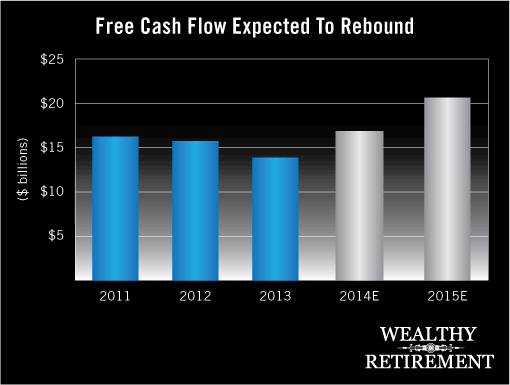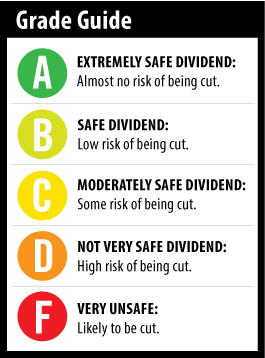 When I was in college, my father thought the greatest place a new graduate could work was IBM (NYSE: IBM).
When I was in college, my father thought the greatest place a new graduate could work was IBM (NYSE: IBM).
Computers were the future, the company had a great training program and the headquarters in Westchester County, New York, was an easy commute from where I grew up.
All that and, to my dad, it was a very safe choice.
I had no desire to work at IBM. I chose my own path and moved into Manhattan. But instead of working at IBM, I wish I had invested in the stock back then. If I had bought just $1,000 in IBM shares and reinvested the dividends, today I’d be sitting on $10,403.
[ad#Google Adsense 336×280-IA]This week, I’m taking a look at the dividend safety of IBM as requested by Margie on Wealthy Retirement‘s Facebook page.
Feel free to check out the page and “like” us.
With a market cap of $188 billion, IBM is the 16th largest publicly traded company in America.
The IT firm offers a wide range of services, including cloud consulting, business continuity services and various software packages. It is a computing behemoth.
And it generates a ton of cash, which is what we want to see as dividend investors.
In 2013, Big Blue, as IBM is often called, generated $13.9 billion in free cash flow. That’s down from the $15.5 billion and $15.7 billion of the previous two years. Much of the difference can be blamed on a big swing in deferred taxes, which added $800 million to cash flow in 2012, but was a negative $1.6 billion in 2013.
Even with the lower free cash flow figure last year, IBM created plenty of cash flow to pay the dividend.
In 2013, the company paid $4 billion in dividends to shareholders, or just 29% of free cash flow. There is plenty of room for the dividend to remain untouched even if free cash flow fell by several billion dollars.
That’s not expected to be a problem though, as free cash flow is forecast to grow to $16.8 billion in 2014 and $20.5 billion in 2015.
 Furthermore, IBM has raised its dividend for 19 consecutive years. If the trend continues, in six more years, it will become a member of the esteemed Dividend Aristocrats, which are stocks that belong to the S&P 500 that have raised their dividends every year for 25 years.
Furthermore, IBM has raised its dividend for 19 consecutive years. If the trend continues, in six more years, it will become a member of the esteemed Dividend Aristocrats, which are stocks that belong to the S&P 500 that have raised their dividends every year for 25 years.
There are investors, indexes and ETFs that only invest in Dividend Aristocrat companies, so attaining that status can drive demand for the stock.
 IBM just sharply raised the dividend in May, by an impressive 16%.
IBM just sharply raised the dividend in May, by an impressive 16%.
Over the past 10 years, each dividend increase has been at least 10% and the compound annual growth rate of the dividend has been a whopping 20%.
If the company is able to continue raising the dividend by at least 10% per year over the next decade, shareholders who currently receive $4.40 per share each year in dividends would receive $11.41, or a 6.2% yield on the current price.
That’s a 158% increase in yield. And, keep in mind, that’s assuming the dividend growth rate is half of what it was the previous 10 years.
With such a low payout ratio and a clear commitment to dividend growth, IBM’s dividend is as safe as my dad thought the company was 25 years ago.
Dividend Safety Rating: A
— Marc Lichtenfeld
[ad#DTA-10%]
Source: Wealthy Retirement



